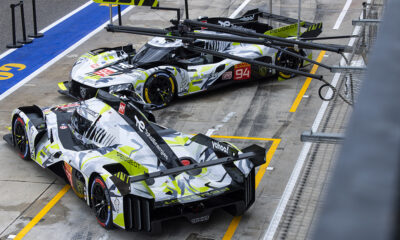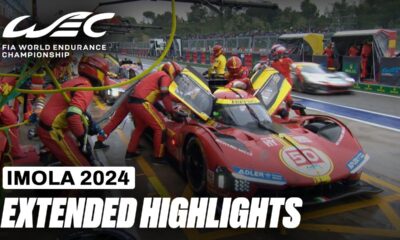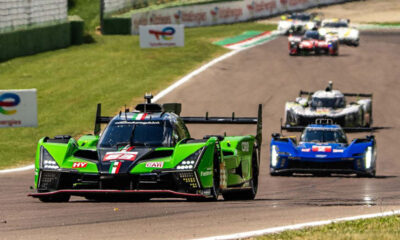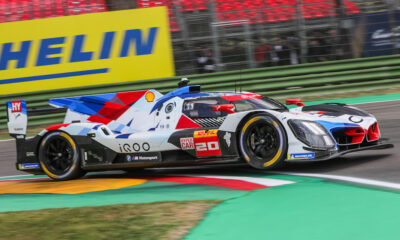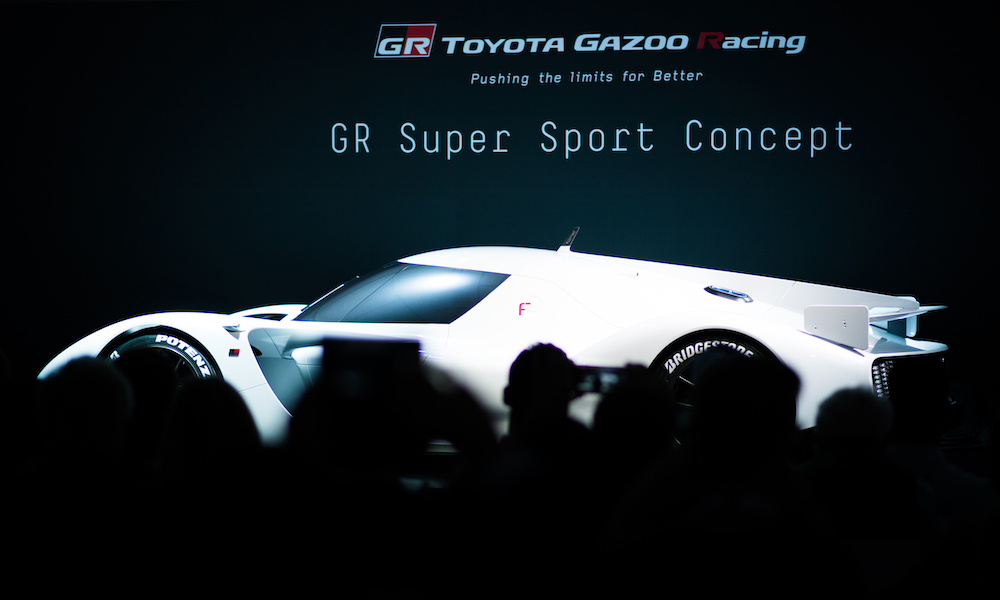
Photo: Toyota
Toyota expects to make some “adaptations” to its Le Mans Hypercar to fit within the LMDh formula’s maximum power figure but it doesn’t expect these changes to be drastic.
On Thursday, IMSA and the ACO announced a top output of 670 horsepower and a minimum weight of 1030 kg for the hybridized global LMDh cars, which are targeted to launch in 2022.
However, that power figure is significantly lower than the 750 hp estimate put forward by the ACO for its Le Mans Hypercar class, which Toyota is confirmed to enter.
Furthermore, the LMDh minimum weight is 70 kilos lighter than what is stated in the LMH technical regulations.
LMH is slated to compete alongside LMDh in both the FIA World Endurance Championship and the IMSA WeatherTech SportsCar Championship beginning in 2022.
The two formulas will be equalized by a yet-to-be-defined Balance of Performance system, while IMSA president John Doonan has said that the two sports car sanctioning bodies have found a “compromise” for their cars’ targeted performance levels.
Toyota Gazoo Racing Europe vice president and WEC team director Rob Leupen told Sportscar365 that the power and weight disparities shouldn’t force the current LMP1 manufacturer to make any significant design changes to its in-development Hypercar.
Any adjustments would depend on the car’s powertrain configuration, although Toyota has been secretive on the inner details of its latest hybrid sports car.
“We cannot afford a drastic engineering change, to review some elements of the car, because in this case we are [running] later and the rollout of our car will not take place before October due to the coronavirus situation,” said Leupen.
“We are able to do some adaptations on the powertrain side and we also have to look into this on the chassis side, so we will be able to anticipate this.
“The regulations are there for 2022, not 2021, so that will give us some time. There will be no fundamental change for our car and no big issues or new developments required for this, from the power and the weight side.
“Under these circumstances, we have a bit of a buffer and time to react.”
Leupen suggested that Toyota would support implementing these adaptations to achieve the lower power figure for the 2021 WEC season, one year before LMDh enters the fray.
“It makes sense to go there as quickly as possible,” he said.
“Let’s discuss this with the other manufacturers within the LMH technical working group.
“[The group] is taking care of this and they have to look at how to handle it next year. In my opinion, if we could prepare for 2022 today then we should see what we can do.”
LMDh Progress “Good for Endurance Racing”
Toyota has voiced its support for the headway made on LMDh, against the backdrop of the global health crisis which led to a delay in announcing the first technical details.
Thursday’s announcement included confirmation of plans to allow LMH cars from “mainstream automotive manufacturers” to contest IMSA races against LMDh entries.
“We are happy to see that the convergence between the ACO and IMSA is taking shape,” said Toyota’s WEC team president Hisatake Murata.
“This is really good news for endurance racing in general. We are confident that the ACO and IMSA will be able to find a good Balance of Performance between LMH and LMDh, so that both categories can fight for victories wherever they compete.
“The fact that IMSA will open its door for LMH sounds like an interesting prospect although this will not have any influence on our LMH project from 2022 onwards.”
Leupen added that talks between Toyota, other car manufacturers and the sanctioning bodies will continue to be held to further define the future of top-level prototype racing.
“We have been quite co-operative with this and are still in discussion and co-operation with the ACO and FIA on these regulations,” he said.
“Pascal Vasselon [Toyota Gazoo Racing technical director] is deeply involved to safeguard the LMH regulations on one side, and on the other to make LMDh possible and to understand and adapt it.
“When these two cars are racing each other there will be a BoP in place.
“From that point of view, we have to be on a similar power level. There has been work from the two sides towards this. Otherwise, with the huge power difference, you would not be able to compete against each other without any BoP
“The ACO and FIA have some experience of this with the EoT in past WEC regulations, so they should be able to come up with a good solution for this, and to be clear to the teams and manufacturers on how they handle it, because this is very important.”


















